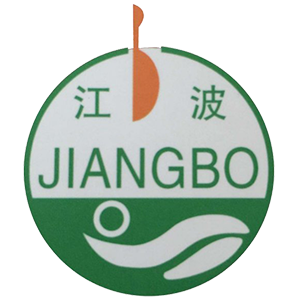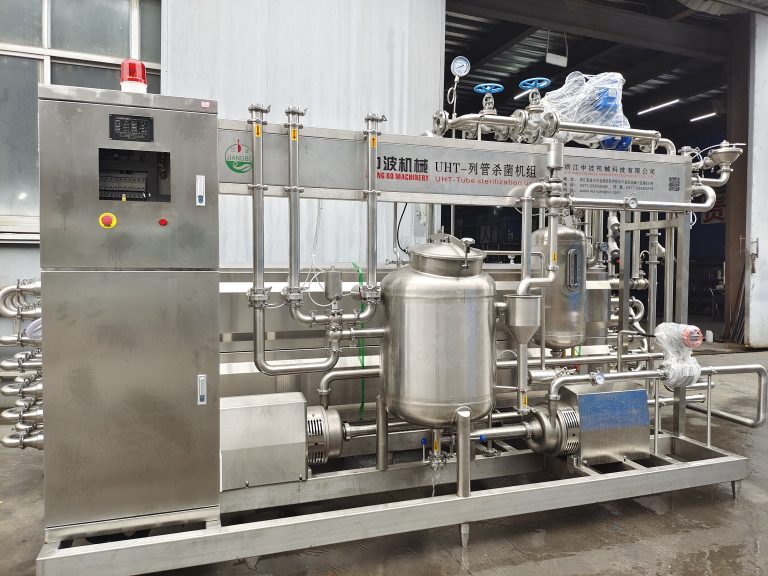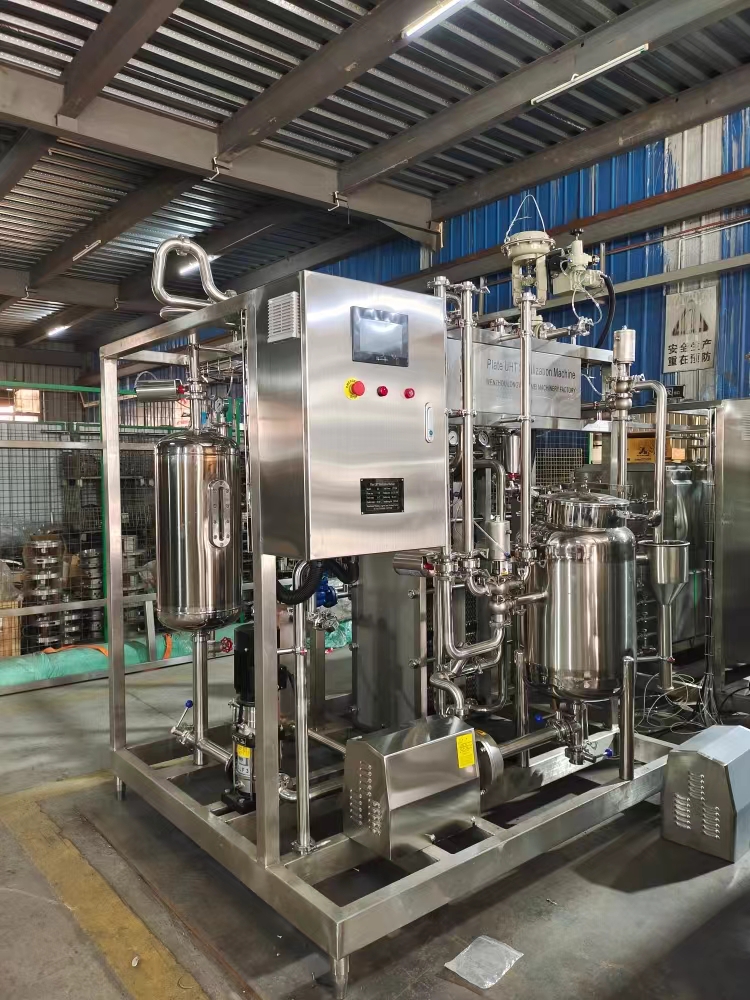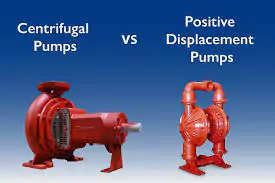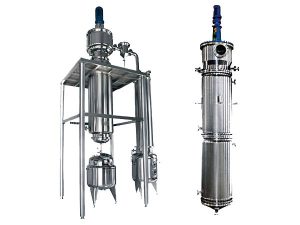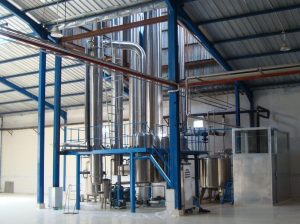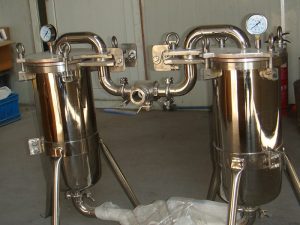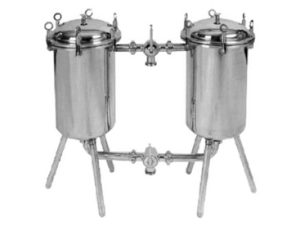When it comes to evaporation technology, both falling film evaporators and wiped film evaporators play crucial roles in industries like chemical processing, food production, and pharmaceuticals. Understanding their differences is key to selecting the right equipment for your specific needs.
In this article, we will delve into the 7 key differences between these two types of evaporators, examining their working principles, efficiency, and application.
What is a Falling Film Evaporator?

A falling film evaporator is a heat exchanger used for the efficient evaporation of liquids. In this system, the liquid material is introduced at the top of vertical tubes, where it flows down the tube wall as a thin film under the influence of gravity. The heat is typically supplied through the shell of the evaporator, and the evaporated vapor is separated from the concentrate. This system is commonly used in industries where large volumes of liquids need to be concentrated, like in food and chemical processing.
What is a Wiped Film Evaporator?

A wiped film evaporator is a high-efficiency evaporation system that utilizes a rotating wiper mechanism to spread the liquid across the surface of the heat exchanger tube. The rotating wiper ensures that the liquid forms a thin, uniform film on the heated surface. This process enables fast evaporation with a shorter residence time, making it particularly suitable for heat-sensitive materials. Wiped film evaporators are ideal for applications that require efficient heat transfer and low operational temperatures.
Falling Film vs Wiped Film Evaporator: 7 Key Differences
Now, let’s explore the 7 key differences between falling film evaporators and wiped film evaporators:
| Feature | Falling Film Evaporator | Wiped Film Evaporator |
|---|---|---|
| Working Principle | Liquid flows downward due to gravity, forming a thin film that evaporates. | Rotating wiper spreads the liquid into a thin, uniform film for evaporation. |
| Applicable Viscosity | Best for low to medium viscosity liquids. | Suitable for higher-viscosity liquids such as oils, syrups, and resins. |
| Heat Transfer Efficiency | Moderate heat transfer efficiency; can be affected by film stability. | High heat transfer efficiency due to constant wiper motion. |
| Material Residence Time | Short residence time due to rapid downward flow. | Even shorter residence time due to fast wiping action. |
| Equipment Structure and Footprint | Compact, with vertical tubes; can be used in multi-effect systems. | Larger in size, with a more complex design and rotating wiper. |
| Applicable Industries | Food processing, dairy, pharmaceuticals, chemical manufacturing. | Heat-sensitive materials, fine chemicals, pharmaceuticals, bioengineering. |
| Energy Consumption | Energy-efficient, especially in multi-effect systems. | Can consume more energy due to the mechanical power needed for the wipers. |
Working Principle
-
Falling Film Evaporator: In a falling film evaporator, liquid enters from the top and flows downward due to gravity. As the liquid descends along the inner surface of the tubes, it forms a thin film, which evaporates under heat supplied from the shell side.
-
Wiped Film Evaporator: A wiped film evaporator uses a rotating wiper that scrapes the liquid across the heated surface of the evaporator tubes. This process creates a thin, uniform film and accelerates evaporation by enhancing heat transfer.
Applicable Viscosity
-
Falling Film Evaporator: Falling film evaporators are best suited for liquids with low to medium viscosity. The gravity-driven film formation is not efficient for highly viscous materials, which can clog or impair the process.
-
Wiped Film Evaporator: Wiped film evaporators are capable of handling higher-viscosity materials. The wiper mechanism allows the material to spread evenly across the surface, making it suitable for viscous liquids, including oils, syrups, and resins.
Heat Transfer Efficiency
-
Falling Film Evaporator: The heat transfer efficiency of a falling film evaporator is moderate. The liquid’s downward flow and thin film enhance heat transfer, but external factors, such as liquid distribution and the stability of the film, can affect performance.
-
Wiped Film Evaporator: Wiped film evaporators excel in heat transfer efficiency due to the constant motion of the wiper, which ensures that the film remains uniformly distributed and in constant contact with the heated surface. This results in faster and more efficient evaporation.
Material Residence Time
-
Falling Film Evaporator: In falling film evaporators, the material typically has a short residence time due to the rapid downward flow, which helps reduce the degradation of heat-sensitive substances.
-
Wiped Film Evaporator: The material residence time in wiped film evaporators is even shorter, as the high-speed wiping action speeds up evaporation. This makes wiped film evaporators ideal for heat-sensitive materials that must be processed quickly to preserve their quality.
Equipment Structure and Footprint
-
Falling Film Evaporator: Falling film evaporators are generally compact in terms of footprint, with vertical tube configurations that can be stacked in multi-effect setups for increased efficiency.
-
Wiped Film Evaporator: Wiped film evaporators are typically larger in structure and require more space due to the rotating wiper mechanism. They also tend to have a more complex design, which can increase installation and maintenance costs.
Applicable Industries
-
Falling Film Evaporator: These evaporators are widely used in industries such as food processing, dairy, pharmaceuticals, and chemical manufacturing for tasks like concentration and solvent recovery.
-
Wiped Film Evaporator: Wiped film evaporators are often used in industries dealing with heat-sensitive materials, including fine chemicals, pharmaceuticals, and bioengineering. Their ability to handle viscous liquids makes them ideal for products like essential oils, high-grade concentrates, and pharmaceuticals.
Energy Consumption
-
Falling Film Evaporator: Falling film evaporators are generally energy-efficient, especially when used in multi-effect systems. However, their efficiency can be influenced by external factors such as heat source temperature and liquid distribution.
-
Wiped Film Evaporator: While wiped film evaporators are highly efficient in terms of heat transfer, their energy consumption can be higher due to the mechanical power required to rotate the wipers and maintain the flow. However, this can be offset by the shorter processing times and higher evaporation rates.
Conclusion
In summary, both falling film evaporators and wiped film evaporators offer distinct advantages depending on the application.
Falling film evaporators are ideal for lower-viscosity liquids and large-scale evaporation processes, whereas wiped film evaporators excel in handling viscous and heat-sensitive materials with higher efficiency and shorter processing times.
If you are considering the purchase or use of either system, it is essential to evaluate your material’s properties, desired throughput, and energy efficiency requirements. Both technologies have their unique strengths, and choosing the right one will ensure optimal performance and cost-efficiency.
References
- Falling Film vs Wiped Film Evaporator
- Difference Between Wiped Film Evaporator and Falling Film Evaporator
